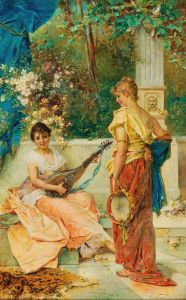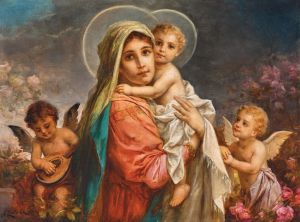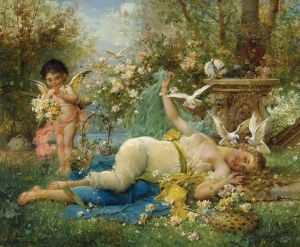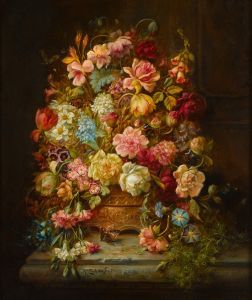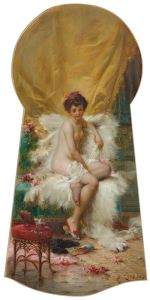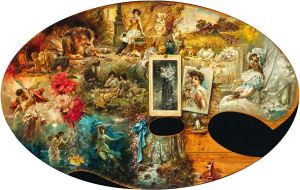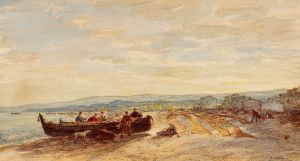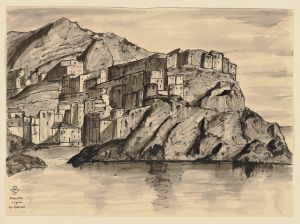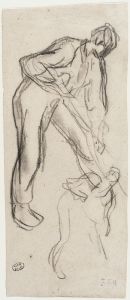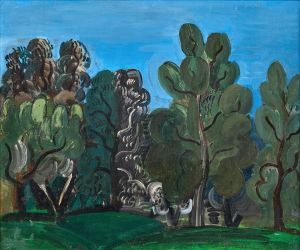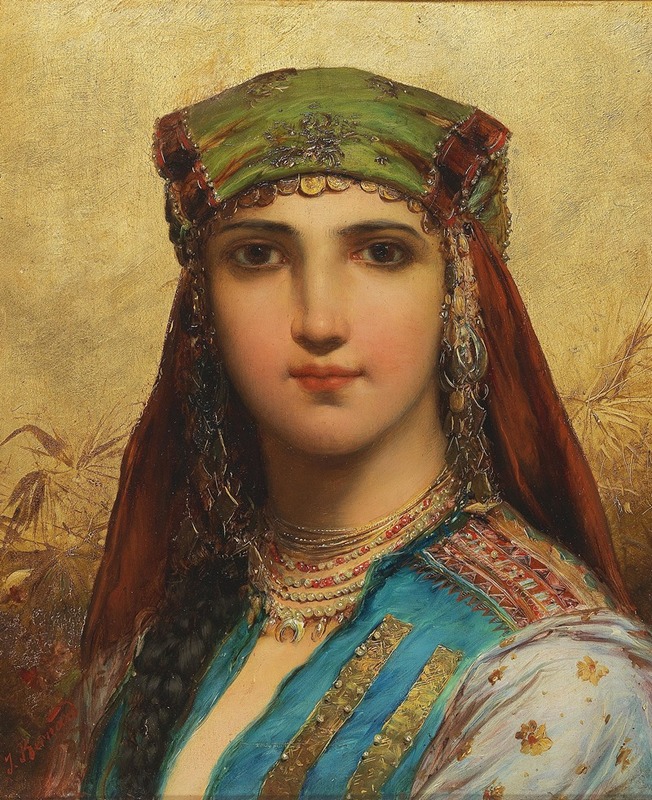
Fellah
A hand-painted replica of Hans Zatzka’s masterpiece Fellah, meticulously crafted by professional artists to capture the true essence of the original. Each piece is created with museum-quality canvas and rare mineral pigments, carefully painted by experienced artists with delicate brushstrokes and rich, layered colors to perfectly recreate the texture of the original artwork. Unlike machine-printed reproductions, this hand-painted version brings the painting to life, infused with the artist’s emotions and skill in every stroke. Whether for personal collection or home decoration, it instantly elevates the artistic atmosphere of any space.
Hans Zatzka (1859–1945) was an Austrian painter known for his romantic and often fantastical depictions of women, mythological scenes, and genre paintings. He was born in Vienna and studied at the Academy of Fine Arts in Vienna from 1877 to 1882, where he was influenced by the academic style of painting. Zatzka's work is characterized by its attention to detail, vibrant colors, and often idyllic and whimsical subject matter.
One of Zatzka's notable works is "Fellah," a painting that exemplifies his style and thematic interests. The term "Fellah" refers to a peasant or agricultural laborer in the Middle East and North Africa, particularly in Egypt. This painting is part of Zatzka's exploration of Orientalist themes, which were popular in European art during the 19th and early 20th centuries. Orientalism in art refers to the depiction of Eastern cultures by Western artists, often romanticizing or exoticizing these cultures.
"Fellah" by Hans Zatzka captures the essence of Orientalism through its portrayal of a Middle Eastern or North African subject. The painting likely features a figure in traditional attire, set against a backdrop that suggests an exotic locale. Zatzka's attention to detail is evident in the intricate patterns and textures of the clothing and surroundings, which are rendered with a high degree of realism and vibrancy. The use of light and shadow in the painting enhances the three-dimensionality of the figure and the setting, creating a sense of depth and atmosphere.
Zatzka's work, including "Fellah," often reflects a fascination with the exotic and the romanticized vision of the East that was prevalent in European art of the time. His paintings were popular among collectors and art enthusiasts, and he produced a significant body of work that includes not only Orientalist themes but also allegorical and mythological subjects. Zatzka's ability to blend realism with fantasy made his paintings appealing to a wide audience, and his works were widely reproduced in prints and postcards.
Despite the popularity of his work during his lifetime, Zatzka's paintings, including "Fellah," are less well-known today. However, they remain an interesting example of the Orientalist movement in art and provide insight into the cultural exchanges and perceptions between Europe and the East during the late 19th and early 20th centuries. Zatzka's work continues to be appreciated for its technical skill, vibrant color palette, and imaginative compositions.
In summary, "Fellah" by Hans Zatzka is a painting that reflects the artist's interest in Orientalist themes and his ability to create detailed, vibrant, and romanticized depictions of Eastern subjects. While specific details about the painting "Fellah" are limited, it is representative of Zatzka's broader body of work and the artistic trends of his time.





